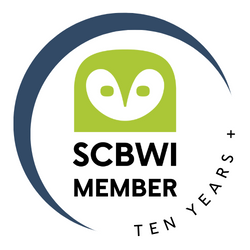I chose today’s Perfect Picture Book because it’s a delightful folktale that has more than a few parallels to today’s political situation, because it pairs the words and artwork of two American immigrants, and because I’d like to think the fictional village in the story, La Paz, is somewhere in Cuba, a country I’m visiting for the first time in mid-March. This is a newly released book, but based on the reviews thus far, I think others agree that this is a Perfect Picture Book:
 Title: The Rooster Who Would Not be Quiet!
Title: The Rooster Who Would Not be Quiet!
Written By: Carmen Agra Deedy
Illustrated By: Eugene Yelchin
Publisher/date: Scholastic Press/2017
Suitable for Ages: 4-8
Themes/Topics: rooster, hero, courage, singing, freedom, protest, oppression, diversity
Opening:
Once there was a village where the streets rang with song from morning till night.
Dogs bayed, mothers crooned, engines hummed, fountains warbled, and everybody sang in the shower.
Brief Synopsis:
After a silence-loving mayor bans singing in La Paz, a rooster appears and continues to crow despite the mayor’s many attempts to silence him.
Links to Resources:
- Paint a rooster with plastic fork “paint brushes”;
- Find more chicken and rooster art ideas here;
- Learn and sing kids’ songs from around the world.
Why I Like this Book:
An allegory perfect for these unique times, The Rooster Who Would Not be Quiet! is a humorous story pitting a very vocal rooster against a mayor elected to ease the annoying volume of a very noisy village. In words and pictures, Deedy and Yelchin show how the power placed in the mayor’s hands goes to his head. Signs admonishing “No Loud Singing in Public, por favor” evolve to “!Basta! Quiet, Already!” as the noisy village becomes “silent as a tomb,” with the words playfully shown on a tombstone. How strict were the laws? “Even the teakettles were afraid to whistle.” With analogies like this, even the youngest listeners will enjoy this story, while the adults chuckle, hum, and even, perhaps break out in song – “kee-kee-ree-KEE!”
Yelchin’s bright, colorful mixed-media illustrations, including seven full-page paintings, and three double spreads with only the word Kee-kee-ree-KEE, wonderfully complement and enhance Deedy’s tale, and breathe life into the village of La Paz.
A Note about Craft:
Deedy utilizes several techniques that render The Rooster Who Would Not be Quiet! a wonderful mentor text for picture book writers, and will ensure that it is enjoyed again and again in both homes and classrooms:
- She sets the story in the village of La Paz, “the peace,” and integrates several Spanish words into the text. Deedy does so in a way that draws readers into the story and helps readers understand the terms in context. Even the rooster is referred to as the gallito who sings despite the best efforts of the mayor, Don Pepe. Most Spanish terms are italicized, which will make it easy for children to find them and discover their meaning in the surrounding text and illustrations.
- At the outset of the tale, Deedy lists many types of song that contribute to the noise, including animal sounds, heartwarming parental sounds, industrial sounds and natural sounds. People enjoy hearing some of these, while others, like a dog braying, could be considered annoying. I think by including such a broad spectrum, Deedy draws attention to what, later, is at risk, namely the vibrant hum of the community. She also adds a further layer to the story by providing a discussion opportunity about the many pleasant and unpleasant songs in a village or town.
- Deedy skillfully utilizes repetition in the interactions between the Gallito and the mayor. Use of repetition bolsters the feeling of a traditional folktale and helps children anticipate the results of these encounters.
- Finally, like all good folktales, The Rooster Who Would Not be Quiet! includes a moral. Who better to deliver this message than a lowly rooster.
I can’t help but conclude this review by quoting the Author’s Note in full:
Roosters sing at sunrise; they also sing at noon, sundown, and in the middle of night. Roosters sing when they please, and that’s all there is to that.
Much like roosters, human children are born with voices strong and true – and irrepressible.
Then, bit by bit, most of us learn to temper our opinions, censor our beliefs, and quiet our voices.
But not all of us.
There are always those who resist being silenced, who will crow out their truth, without regard to consequence.
Foolhardy or wise, they are the ones who give us the courage to sing.
So crow away!
This Perfect Picture Book entry is being added to Susanna Hill’s Perfect Picture Books list. Check out the other great picture books featured there!







Wow! It is timely and I love this story. Great review and I want to read it! Can’t control free-thinkers.
A winner. So many levels of story and that opening is wonderful. Thanks for including the entire author’s note 😉
Pingback: Perfect Picture Book Friday: THE ROOSTER WHO WOULD NOT BE QUIET | Thoughts on writing for children